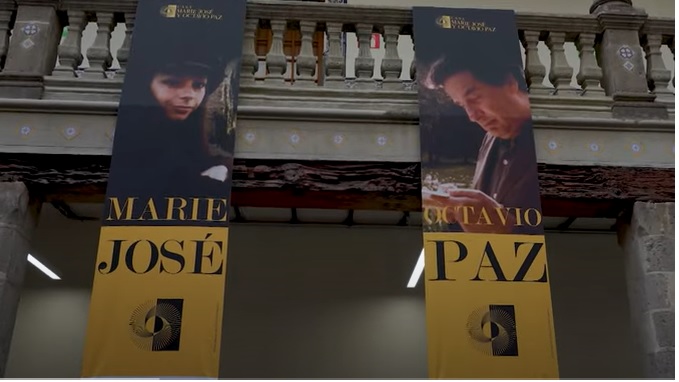During his last year of life, Mexican Literature Nobel Prize winner Octavio Paz (1914-1998) received millionaire offers for his library and archive in order to store it outside of Mexico; the poet always responded: “I am a Mexican writer”, and never allowed this to happen, as has happened with other intellectuals.
After a long and complicated legal process, because Marie José Tramini, heiress of all of Paz’s assets, died intestate, his coveted archive will finally be made available for viewing.
On the poet’s 109th birthday, the doors of the Casa María José y Octavio Paz, located in a 17th century building known as La Perulera (Felipe Carrillo Puerto 445), in Tacuba, were opened for the first time.
At a press conference, Alejandra Frausto Guerrero, Secretary of Culture, informed that Octavio Paz’s legacy is made up of around 70 thousand documents, 8 thousand 138 books, 476 works of art, 472 pieces of decorative art, 651 pieces of jewelry, 64 articles of clothing and 50 diverse furnishings and furniture.
Although Octavio Paz’s invaluable archive is still being catalogued and rescued, in the María José and Octavio Paz House you can already visit some spaces with photographs of the poet, objects, furniture, a library, a room with Maria José’s artwork and some of the works of art that the writer received from his friends such as Antonio Tapies, Tamayo, Juan Soriano and especially a portrait of Octavio Paz by Alberto Gironella.
There is also the exhibition Soñar con las manos, soñar en voz alta, where children from the Semillero de Fotografía de Jiquilpan, Michoacán, intervened photos of Paz.
The National Center for the Conservation and Registration of Movable Artistic Heritage (Cencropam) and the National Institute of Fine Arts and Literature are working on the project.
The space was rescued by the Government of Mexico City and also includes a laboratory dedicated to the restoration of Octavio Paz’s property, a collection that, according to the authorities, is treated with great care and affection and under the protection of the National Guard.

Claudia Sheinbaum, head of government, recalled some of the legal history, when, after a dispute, the Sistema de Desarrollo Integral de la Familia (DIF) was declared executor of the couple’s assets, including three properties and an apartment in Paris.
Marina Núñez Bespalova, Undersecretary of Cultural Development, said: “Octavio Paz’s books will be in the house as they are worked on and recovered. The library will be open to the public and everything you see now are samples of the great collection that will begin to be exhibited. The heart of Octavio Paz’s heritage will be here.
Alejandra Frausto said that in the cultural space, the hope of poetry and art is being sown in the youngest.
Finally, Anthony Stanton, expert and friend of Octavio Paz, assured that “during the last year of his life, and I say this for the first time in public, Octavio received offers from institutions that wanted to acquire his library and archive, one of them was for several million dollars…. today we have the opportunity to show that national institutions are capable of taking care of and disseminating the library, the archive and the entire collection of our only Nobel Prize winner in Literature and of his companion, the artist Marie José Tramini, it is an important challenge in a country of instinctive distrust”.
